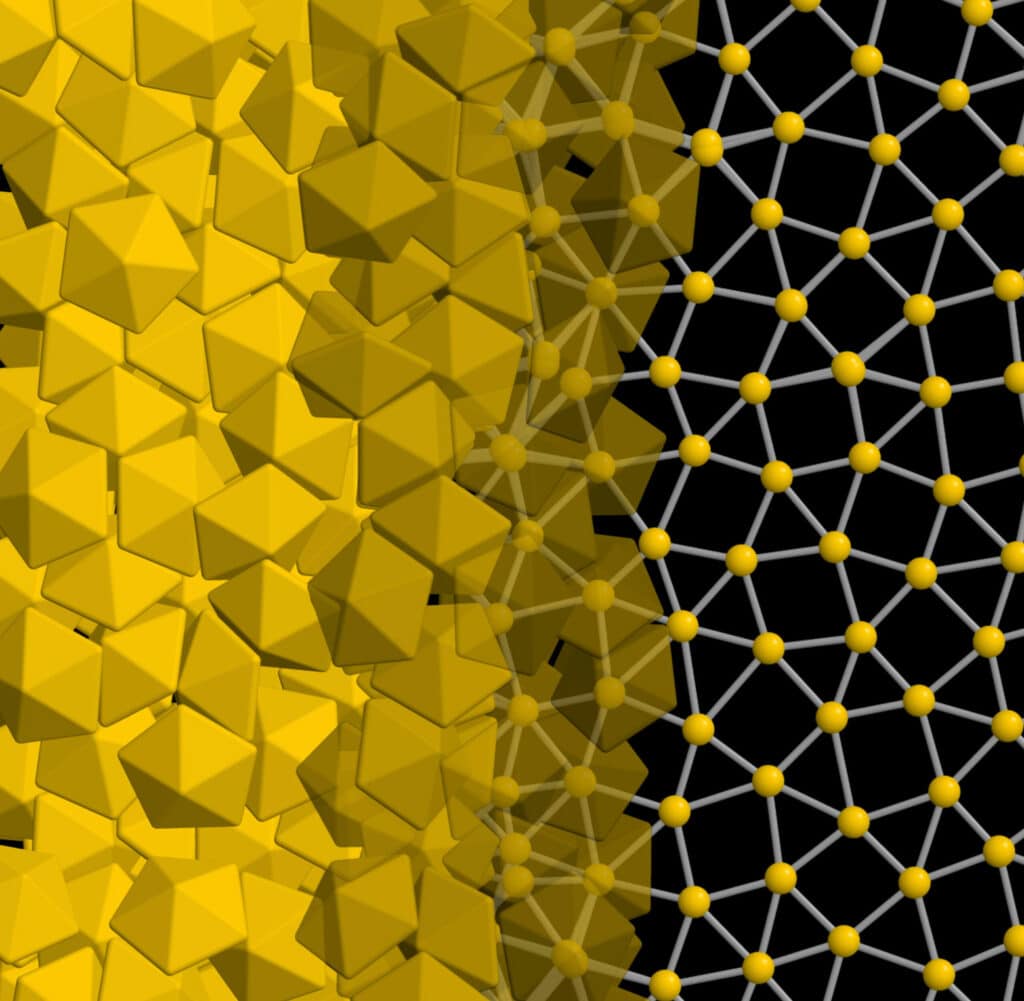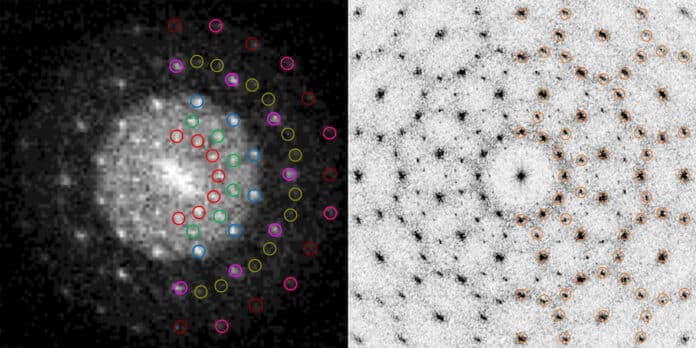Although almost any kind of colloidal crystal can be designed and produced, thoughtfully and purposefully creating colloidal quasicrystals has proven to be a difficult task.
A new study by a team of nanoengineers reported about creating a quasicrystal from nanoparticles using DNA.
Quasicrystals are different from ordinary crystals because their patterns don’t repeat. They can have exceptional properties, such as being able to conduct electricity without resistance, absorbing heat and light differently, or having surfaces that are very hard or slippery. Nanoparticles are often used to design synthetic materials at the nanoscale level, and scientists have recently used DNA to assemble the first quasicrystal, a new frontier in nanomaterial design.
The team focused on bipyramidal shapes—two pyramids stuck together at their bases. They then tried bipyramidal bodies—basically, two pyramids stuck together at their bases. DNA strands were then encoded to recognize one another to program the particles to assemble into a quasicrystal.
Separately, the team led by Sharon Glotzer, the U-M Anthony C. Lembke Chair in Chemical Engineering, had been modeling bipyramids with varying side numbers. Under specific circumstances and with the appropriate relative proportions, decahedra—10-sided pentagonal bipyramids—would form a quasicrystal, according to research by Yein Lim and Sangmin Lee, doctoral students in chemical engineering at the University of Michigan.

Glotzer said, “In our original quasicrystal simulation, the tetrahedra were arranged into decahedra with very small gaps between the tetrahedra. Here, those gaps would be filled by DNA, so it made sense that decahedra might make quasicrystals, too.”
The team combined theory and experimentation to form a quasicrystal out of the decahedron particles. Scientists confirmed this by using electron microscope imaging.
This is a significant milestone in the realm of nanoscience. The findings shed light on the design and creation of intricate nanoscale structures and pave the way toward advanced materials and innovative nanotechnology applications.
The structure appears to be a collection of rosettes arranged in concentric circles. The 10-sided shapes in the 2D layers have a 12-fold symmetry and stack at regular intervals. An axial quasicrystal is a stacked structure similar to that observed in tetrahedra-based quasicrystals. However, in contrast to most axial quasicrystals, the novel quasicrystal’s layers’ tiling pattern varies from one layer to the next. Instead, a sizeable portion of the tiles deviate unpredictably, and this slight degree of chaos adds stability.
Journal Reference:
- Zhou, W., Lim, Y., Lin, H., et al. Colloidal quasicrystals engineered with DNA. Nat. Mater. (2023). DOI: 10.1038/s41563-023-01706-x
